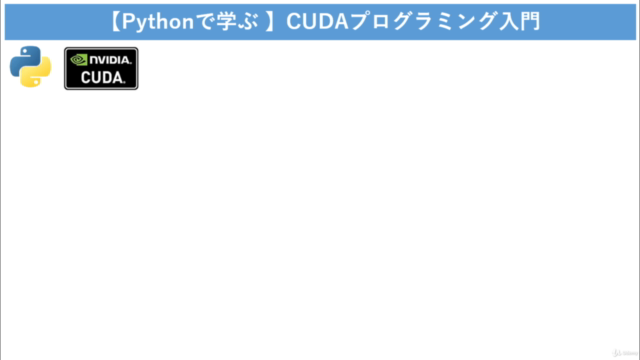【Pythonで学ぶ 】CUDA プログラミング入門
Google Colab で始める PyCUDA プログラミング
4.34 (367 reviews)

2,789
students
5.5 hours
content
Nov 2021
last update
$49.99
regular price
What you will learn
Pythonを用いたCUDAプログラミング
HPCやGPUプログラミングを始めるための基礎知識
Google Colabを使ったGPUでのプログラムの実行方法
Screenshots




2604598
udemy ID
10/13/2019
course created date
10/29/2019
course indexed date
Bot
course submited by